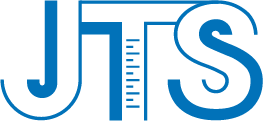IP ProductProduct
Your Location:Home > IP ProductOn August 1, 2025, China's State Administration for Market Regulation (Standardization Administration of China) approved and released the new mandatory national standard "Requirements for the Restriction of Hazardous Substances in Electrical and Electronic Products" (GB 26572-2025). This standard is scheduled to take effect on August 1, 2027, replacing the 2011 recommended standard. It marks a new phase in the management and control of hazardous substances in electrical and electronic products in China. Following a two-year transition period, the electronics industry will face comprehensive environmental upgrades.
1. Development History of China RoHS
1)China's RoHS control began with the "Administration Measure on the Control of Pollution Caused by Electronic Information Products" issued in 2006, which initiated the control of hazardous substances in electronic information products.
2)In 2016, eight departments including the Ministry of Industry and Information Technology (MIIT) issued the "Management Methods for the Restriction of the Use of Hazardous Substances in Electrical and Electronic Products", fully implementing a control system based on the "Compliance Management Catalog + Conformity Assessment + Post-market Supervision".
3)In December 2019, the China RoHS Public Service Platform was officially launched to uniformly manage conformity assessment information and publish assessment results related to the restriction of hazardous substances in electrical and electronic products.
2. Main Content of the New Standard (GB 26572-2025)The new standard's main content encompasses the following three aspects:1)Mandatory Concentration Limits: GB 26572-2025 sets mandatory concentration limits for 10 chemical substances considered toxic and harmful to human health and the environment that may be present in electrical and electronic products. These substances include:
•4 Heavy Metal Elements: Lead (Pb), Mercury (Hg), Cadmium (Cd), Hexavalent Chromium (Cr(VI)).
•6 Persistent Organic Pollutants (POPs): Polybrominated Biphenyls (PBBs), Polybrominated Diphenyl Ethers (PBDEs), and 4 Phthalates (DEHP, BBP, DBP, DIBP).
2)Labeling and Information Disclosure: The standard specifies requirements for labeling, disclosure of hazardous substance information, and the retention of technical support documentation to ensure that control results are traceable and verifiable. After enterprises use digital technologies such as QR codes or electronic displays for standardized information labeling, consumers can quickly, comprehensively, and accurately access information about hazardous substances in products when making purchasing decisions.
3)Clear Testing Requirements: The types of the 10 restricted hazardous substances, their concentration limits, and the corresponding testing methods stipulated in the standard are aligned with the technical requirements of the relevant international standards.
3. Product Classification and Differential Control RequirementsThe new standard categorizes electrical and electronic products into two classes, proposing different control requirements:•Class I Products: Products included in the Compliance Management Catalog. These are the key focus of implementation control. The 10 hazardous substances contained in these related products must meet the concentration limits. Furthermore, they must be marked with the hazardous substance control label, and the presence of hazardous substances in each component must be disclosed.
•Class II Products: Products not included in the Compliance Management Catalog. These products are required to be marked with the hazardous substance control label and disclose the presence of hazardous substances in each component, etc.
J-Testing is a CNAS, CMA, and CPSIA accredited laboratory, committed to providing global clients with professional third-party testing, consulting services, and cross-border certification assistance.






 Our Service
Our Service
